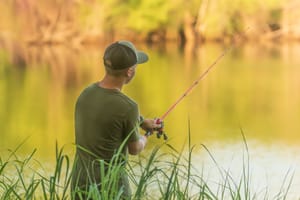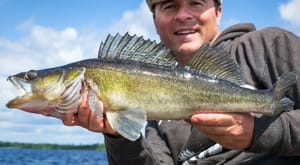When it comes to fishing, every enthusiast knows that the right gear can make all the difference. But have you ever considered how the color of your kayak could affect your fishing success? In this comprehensive guide, we'll dive into the world of kayak colors and discover which hues are best suited for your angling adventures.
Key Takeaways:
- Understanding the visibility and camouflage aspects of kayak colors can enhance your fishing experience.
- Safety considerations play a crucial role in selecting the best color for a fishing kayak.
- Personal preference and the type of fishing environment should guide your color choice.
The Importance of Kayak Color in Fishing
The color of your kayak might seem like a trivial detail at first glance, but it can have a significant impact on your fishing experience. A kayak's color can affect how fish perceive it, potentially influencing your catch rate. Additionally, the visibility of your kayak to other boaters is an important safety consideration.
Bright colors like yellow, orange, and red are highly visible on the water, making them a popular choice for safety-conscious anglers. These colors stand out against the blue and green hues of the water, ensuring that you are seen by other watercraft. On the other hand, colors like blue, green, or even camouflage patterns can help you blend into the surroundings, potentially making you less noticeable to fish.
Safety vs. Stealth: Finding the Balance
When selecting the best color for a fishing kayak, you must balance safety with stealth. While blending into the environment may seem advantageous for sneaking up on fish, it should not come at the cost of being invisible to other boaters, which can be dangerous.
For those who fish in high-traffic areas, opting for a kayak in a bright color is advisable to maintain high visibility. Conversely, in remote or less trafficked waters, where the risk of collision is lower, a more subdued color or camouflage might be beneficial for a stealthier approach to fishing.
The Role of Water Conditions in Color Choice
The type of water you plan to fish in can also influence the best color choice for your kayak. In clear waters, a kayak that matches the sky's color, such as light blue or gray, may make it less visible to fish looking upward. In murkier waters, darker colors like brown or dark green can help you blend in with the surroundings.
It's also worth considering the typical weather conditions in your fishing area. On sunny days, reflective colors can create glare, which might spook fish. On cloudy days, a darker kayak might not stand out as much against the overcast sky, providing a level of stealth without compromising safety.
Personal Preference and Environmental Considerations
Ultimately, the best color for a fishing kayak also comes down to personal preference. Some anglers have favorite colors or believe certain colors bring them luck. While there's no scientific evidence to support the idea of a "lucky" kayak color, being comfortable and confident in your gear can positively affect your fishing experience.
Additionally, consider the environment in which you'll be fishing. If you're in an area with a lot of foliage, a green or brown kayak might blend in well. In open waters, brighter colors could be more appropriate. Think about the typical scenery and try to choose a color that will work well with the natural palette of your fishing spots.
The Impact of Color on Fish Behavior
While there's ongoing debate among anglers about how much kayak color influences fish behavior, it's generally accepted that fish can see colors. However, the extent to which they can distinguish between different shades and how they react to them can vary widely among species.
Some anglers argue that certain colors can attract fish, while others believe that a kayak's color is less important than its movement and silhouette. It's a good idea to research the specific habits of the fish you're targeting to see if there's any consensus on color preferences or aversions.
Durability and Maintenance of Kayak Colors
Another aspect to consider when choosing your kayak's color is the long-term durability and maintenance. Some colors may fade more quickly than others when exposed to sunlight over time. Lighter colors often show less wear and scratches, while darker colors can make these blemishes more apparent.
When it comes to maintenance, lighter-colored kayaks may require more frequent cleaning to keep them looking their best, as they can show dirt and stains more readily. Darker colors might hide dirt better, but they can also absorb more heat, which could affect your comfort during long fishing trips in warm weather.
Summary
Choosing the best color for a fishing kayak involves considering visibility, camouflage, safety, water conditions, personal preference, and the behavior of the fish you're targeting. Bright colors are best for safety and visibility, while darker or camouflage colors can provide stealth in certain environments. Remember to also think about the long-term durability and maintenance of the color you choose. Ultimately, the best kayak color is one that suits your fishing style, keeps you safe, and brings you joy on the water. Discover the ideal kayak for your fishing adventures by exploring our Best Fishing Kayak 2024 | Our Top 9 Picks, tailored to enhance your time on the water!
FAQ Section
Does the color of my kayak really matter for fishing?
Yes, the color of your kayak can affect your visibility to both fish and other boaters. While it may not be the most critical factor in your fishing success, it can play a role in your overall experience and safety on the water.
What is the safest color for a fishing kayak?
Bright colors like yellow, orange, and red are considered the safest choices for a fishing kayak because they are highly visible to other boaters, reducing the risk of collisions.
Can the color of my kayak affect the fish I'm trying to catch?
Some anglers believe that certain kayak colors can either attract or spook fish, although this can vary depending on the species and the environment. It's best to research the habits of the fish you're targeting to see if color plays a significant role.



